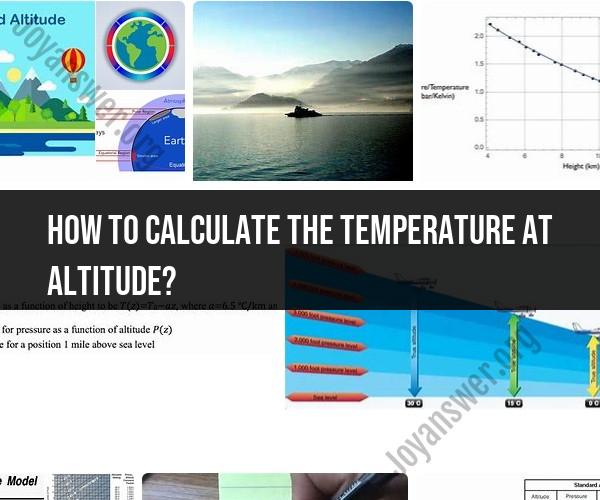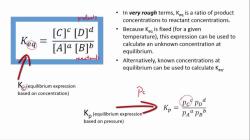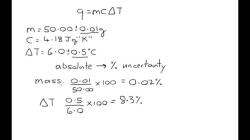How to calculate the temperature at altitude?
Calculating temperature at a specific altitude typically involves using mathematical models or formulas that describe how temperature changes with altitude in the Earth's atmosphere. One common model used for this purpose is the International Standard Atmosphere (ISA), which provides a standard reference for temperature and other atmospheric properties at various altitudes. Here's a general method for calculating temperature at a given altitude using the ISA model:
Access ISA Data:
- Obtain a table or chart that provides the standard temperature values at various altitudes according to the ISA model. These tables are widely available in textbooks, meteorological references, or online resources.
Identify the Altitude:
- Determine the altitude at which you want to calculate the temperature.
Consult the ISA Table:
- Look up the standard temperature value corresponding to the altitude you've identified in the ISA table. The ISA model typically provides temperature values in degrees Celsius (°C) or Kelvin (K).
Apply the Standard Temperature:
- The standard temperature obtained from the ISA model is the temperature you would expect at that altitude under standard atmospheric conditions. However, real-world atmospheric conditions may deviate from the standard. Therefore, it's essential to note that the actual temperature at a given altitude may vary due to factors like weather patterns, local terrain, and time of day.
Here is a simplified example of how to calculate the temperature at a specific altitude using the ISA model:
Let's say you want to find the temperature at an altitude of 5,000 meters (approximately 16,404 feet) using the ISA model.
- Consult the ISA table or chart.
- Look up the standard temperature value at 5,000 meters. Let's assume it's -20°C.
Keep in mind that this calculation provides you with the standard temperature value at that altitude. Real-world conditions may differ, especially if you're interested in specific weather-related temperature variations.
If you need more accurate temperature information at a specific altitude for practical purposes like aviation, weather forecasting, or engineering calculations, it's advisable to consult reliable atmospheric data sources, meteorological organizations, or utilize specialized software that incorporates real-world temperature data and atmospheric models.
Additionally, for academic or research purposes, you might consider using more complex atmospheric models like the U.S. Standard Atmosphere or regional meteorological data sets that provide more detailed and accurate temperature profiles for various altitudes and locations. These models take into account factors like latitude, seasonal variations, and weather patterns to provide a more accurate representation of the atmosphere's temperature at different altitudes.
Determining Temperature at Altitude: Calculations and Techniques
There are a few different ways to calculate the temperature at altitude. One common method is to use the standard lapse rate, which is the average rate at which temperature decreases with altitude. The standard lapse rate is approximately 6.5 degrees Celsius per 1000 meters (3.5 degrees Fahrenheit per 1000 feet).
To calculate the temperature at altitude using the standard lapse rate, you will need to know the temperature at ground level and the altitude at which you want to know the temperature. You can then use the following formula:
T_altitude = T_ground - (lapse_rate * altitude)
where:
- T_altitude is the temperature at altitude
- T_ground is the temperature at ground level
- lapse_rate is the standard lapse rate (6.5 degrees Celsius per 1000 meters)
- altitude is the altitude in meters
For example, if the temperature at ground level is 20 degrees Celsius, then the temperature at an altitude of 1000 meters would be approximately 13.5 degrees Celsius.
Another method for calculating the temperature at altitude is to use a temperature model. Temperature models are based on a variety of factors, including the standard lapse rate, air pressure, and humidity. Temperature models are generally more accurate than using the standard lapse rate alone, but they can be more complex to use.
How to Calculate Temperature Changes with Altitude
To calculate the temperature change with altitude, you can use the following formula:
temperature_change = (lapse_rate * altitude_change)
where:
- temperature_change is the change in temperature in degrees Celsius
- lapse_rate is the standard lapse rate (6.5 degrees Celsius per 1000 meters)
- altitude_change is the change in altitude in meters
For example, if you are climbing a mountain and the altitude changes by 1000 meters, then the temperature would decrease by approximately 6.5 degrees Celsius.
Exploring Temperature Variations in Different Altitudes
Temperature variations in different altitudes can be caused by a number of factors, including the standard lapse rate, air pressure, and humidity. The standard lapse rate causes the temperature to decrease with altitude because the air is less dense at higher altitudes. Air pressure also decreases with altitude, which can also cause the temperature to decrease. However, humidity can have a more complex effect on temperature. Higher humidity can cause the temperature to increase, especially at higher altitudes.
Temperature variations in different altitudes can also be affected by local factors, such as topography and vegetation. For example, valleys tend to be warmer than mountains at the same altitude. This is because valleys trap heat from the sun. Forests are also generally warmer than open areas, because trees block the sun's heat from reaching the ground.
Understanding temperature variations in different altitudes is important for a variety of activities, such as hiking, camping, and flying. By understanding how temperature changes with altitude, you can better prepare for the conditions you will encounter.













